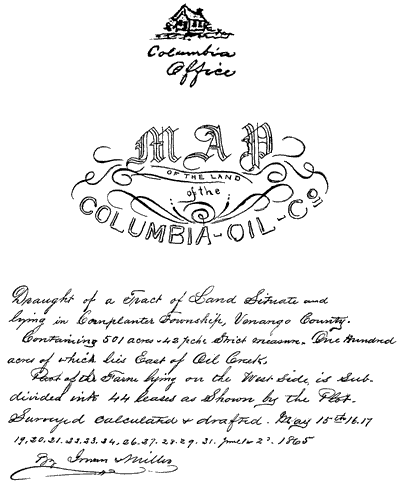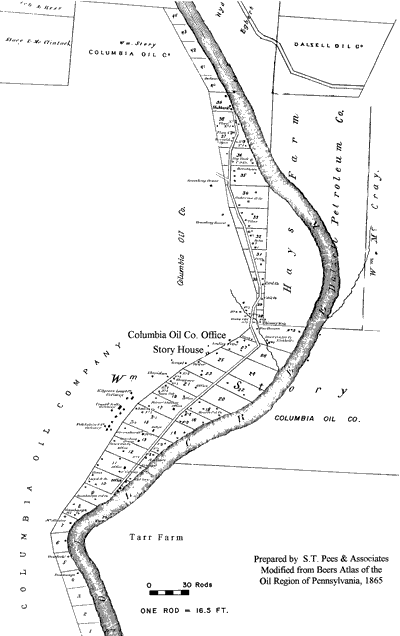|
|
Carnegie's Pond
A pond was dug in the flats with the specification that it should be big enough to hold one hundred thousand barrels of oil. Coleman referred to it as a lake of oil. Today we call it Carnegie’s pond, and although we think that we know where it was located ( a peeper’s haven now), some real detective work may be needed to confirm this site. It was filled with oil and indeed was lake-like. The unforeseen process of oil seeping into the ground and evaporating into the air commenced immediately. This didn’t deter the pair of would-be hoarders. They kept replacing the lost oil. Coleman had made an off-the-wall calculation that when the oil supply from wells would quit (as it must, he thought), the oil in the lake would fetch ten dollars per barrel. This was supposed to be a million dollar stash.
After refilling the pond many times over, the gentlemen gave up. Oil was still coming out of the shallow wells, and the Company and its investors were making a great deal of money. Coleman and Carnegie were eventually proved to be right in the sense that the oil did deplete, but this didn’t happen until the Columbia Oil Co. and it successors had produced oil for nearly one hundred years on that 501 acre farm. Small amounts might be produced there today with dewatering and massive repressuring, but it may not be economic to do so.
 |
Taken from an 1865 map of Columbia Farm by Irwin Miller which shows 44 leases at the time. The Beers Atlas (1865) also shows wells, some buildings etc. in addition to the 44 leases. Prepared by S.T. Pees from marginalia.
|
|
|
 |
Map modified from Beers Atlas.
|
|
|


